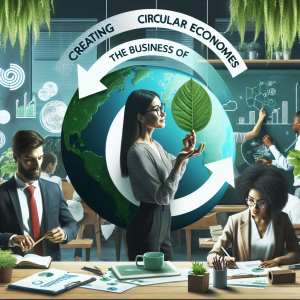In recent years, there has been a profound shift in how we think about transportation. As urbanization accelerates and environmental concerns mount, the concept of “Mindful Mobility” has emerged as a pivotal framework for rethinking transportation solutions. This approach emphasizes not only the need for more sustainable modes of travel but also the importance of promoting conscious and intentional choices in how we move from one place to another.
The Rise of Mindful Mobility
A Response to Urbanization and Climate Change
The rapid growth of urban areas has led to increased traffic congestion, pollution, and a higher carbon footprint. According to the World Bank, cities account for more than 70% of global greenhouse gas emissions. In response, cities around the globe are adopting innovative mobility solutions that prioritize sustainability. Mindful Mobility encourages individuals and communities to consider the environmental, social, and economic impacts of their transportation choices, encouraging a collective shift toward greener alternatives.
The Shift from Individualism to Collective Responsibility
In a world where car ownership was once synonymous with personal freedom and success, the narrative is changing. People are increasingly recognizing the collective nature of transportation—how one person’s choice can affect the broader community. Mindful Mobility promotes the idea that sustainable transportation is not merely an individual choice but a shared responsibility. This encompasses everything from public transit systems to pedestrian-friendly city planning.
Components of Mindful Mobility
Sustainable Transportation Modes
-
- Public Transportation: Cities are reinvesting in public transit systems as a primary mode of travel. Efficient buses, trams, and subways not only reduce the number of vehicles on the road but also lower emissions per passenger.
- Public Transportation: Cities are reinvesting in public transit systems as a primary mode of travel. Efficient buses, trams, and subways not only reduce the number of vehicles on the road but also lower emissions per passenger.
-
- Active Transportation: Walking, cycling, and skating are being promoted through the development of bike lanes, pedestrian paths, and car-free zones. These activities not only provide health benefits but also reduce dependence on fossil fuels.
- Active Transportation: Walking, cycling, and skating are being promoted through the development of bike lanes, pedestrian paths, and car-free zones. These activities not only provide health benefits but also reduce dependence on fossil fuels.
-
- Electric and Hybrid Vehicles: The rise of electric vehicles has been monumental. With advancements in battery technology and the expansion of charging infrastructure, electric mobility is becoming more accessible and mainstream.
- Electric and Hybrid Vehicles: The rise of electric vehicles has been monumental. With advancements in battery technology and the expansion of charging infrastructure, electric mobility is becoming more accessible and mainstream.
-
- Car-sharing and Ride-sharing: Innovative platforms like Zipcar and Lyft have revolutionized the way people think about car ownership. These options allow individuals to access a vehicle when needed without the commitment of owning one.
- Car-sharing and Ride-sharing: Innovative platforms like Zipcar and Lyft have revolutionized the way people think about car ownership. These options allow individuals to access a vehicle when needed without the commitment of owning one.
Technological Integration
The evolution of Mindful Mobility is also deeply intertwined with technological advancements. Mobile apps that provide real-time transit information, route optimization, and carpooling features help users make informed decisions. Smart traffic management systems utilize AI to improve traffic flows, reducing congestion and emissions.
Policy and Community Engagement
Mindful Mobility is not just about individual choices; it requires supportive policies and community engagement. Governments are implementing measures such as congestion pricing, subsidies for public transportation, and investments in infrastructure that prioritizes sustainable modes. Community outreach and education initiatives foster a culture of sustainability, empowering residents to embrace mindful mobility practices.
Future Prospects: A Vision for The Road Ahead
The road ahead for Mindful Mobility is filled with possibilities. As the global landscape continues to evolve, we can expect further innovations that prioritize sustainability. Concepts like autonomous electric vehicles and hyperloop technology could redefine distance and accessibility.
However, to ensure that these advancements benefit all members of society, equity must remain a core tenet. This means making sustainable transportation accessible and affordable for marginalized communities.
An Invitation to Engage
In adopting a Mindful Mobility mindset, individuals are encouraged to assess their own habits and choices. This can range from considering the environmental impact of a short car ride to advocating for better public transportation in their community.
Awareness, engagement, and collective efforts will propel the Mindful Mobility movement forward, ensuring that transportation solutions evolve to meet the needs of both people and the planet. As individuals and communities come together to embrace this ethos, they can pave the way for a healthier, more sustainable future for generations to come.
Conclusion
Mindful Mobility represents a transformative approach to transportation, one that advocates for sustainable practices while fostering a sense of shared responsibility. By recognizing the interconnectedness of our travel choices, cities can move towards more inclusive and environmentally friendly transportation solutions. As the world continues to grapple with urbanization and climate change, Mindful Mobility offers a hopeful vision for a more sustainable and conscious future of transportation.




